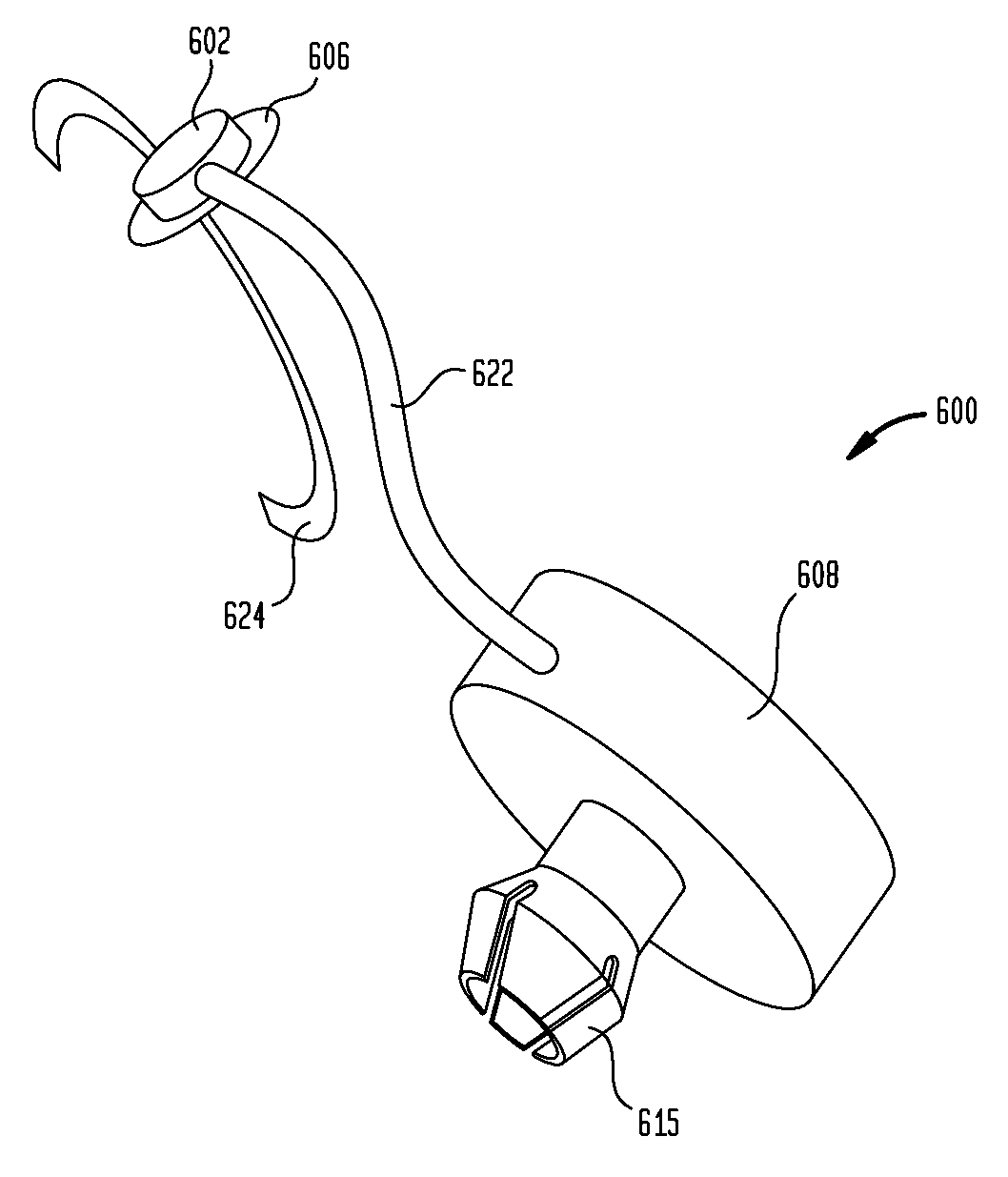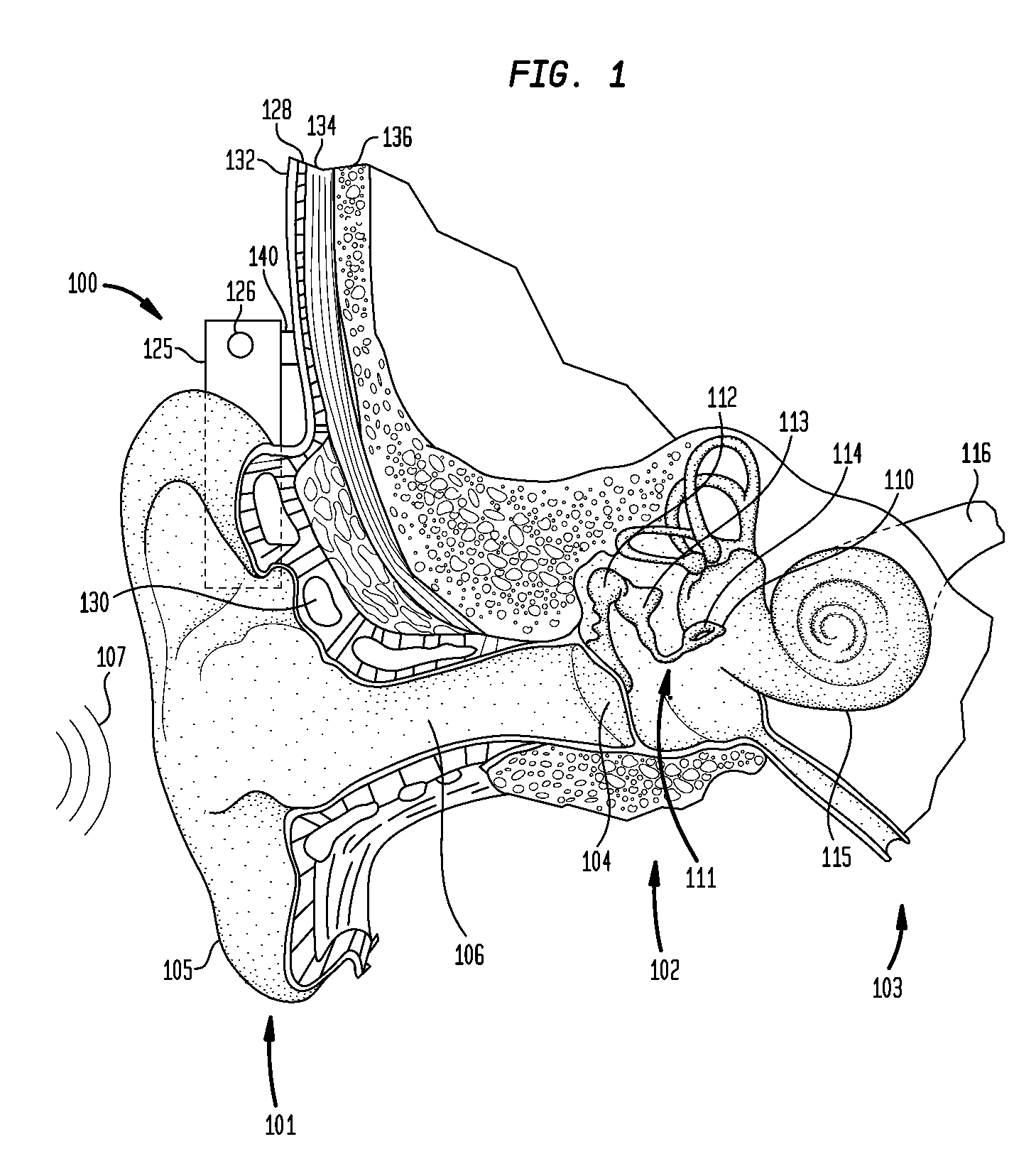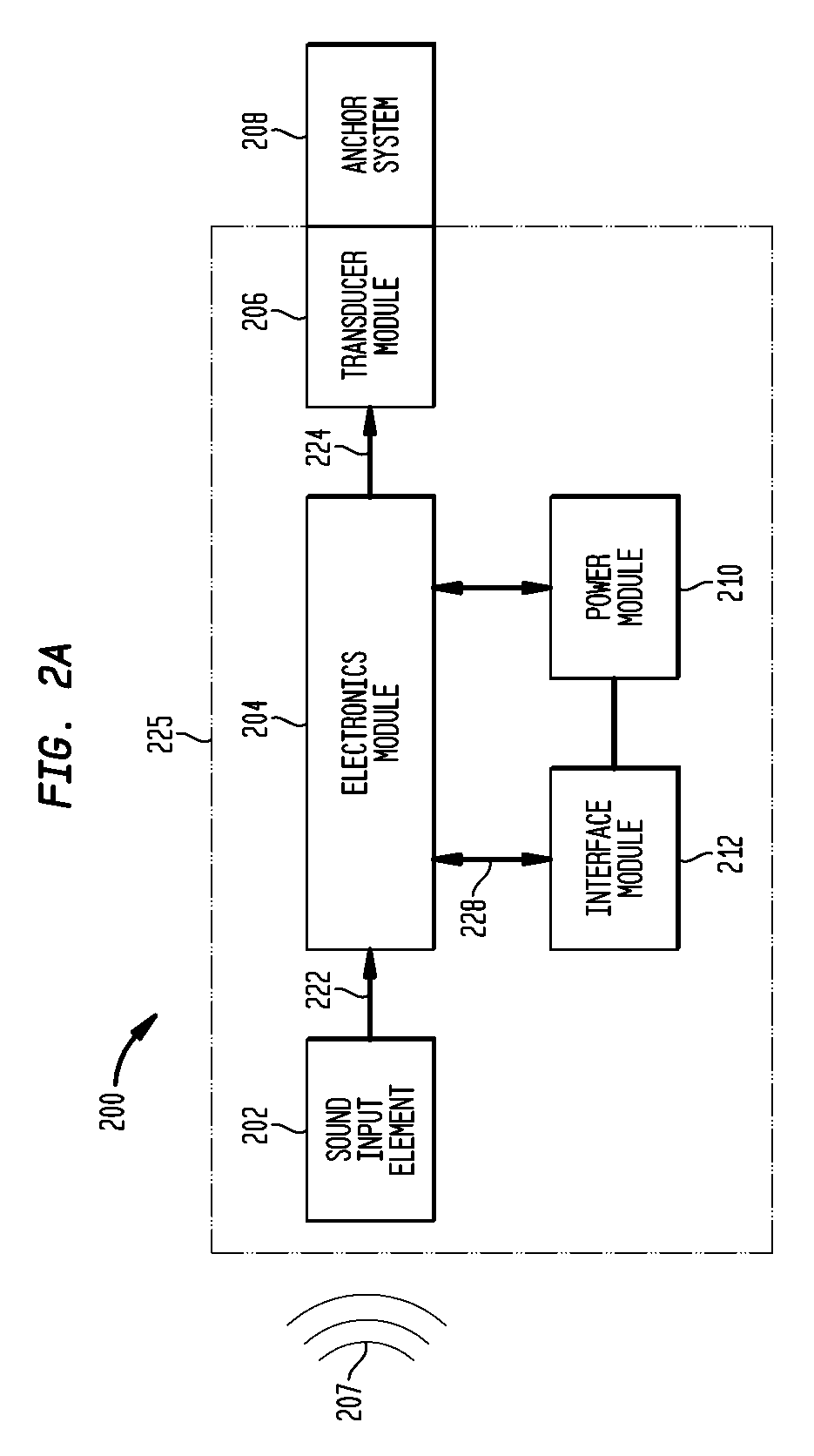Bone conduction hearing device having acoustic feedback reduction system
a bone conduction hearing device and feedback reduction technology, which is applied in the direction of bone conduction transducer hearing devices, electrical equipment, electrotherapy, etc., can solve the problems of conductive hearing loss, impeded normal mechanical pathways to provide sound to hair cells in the cochlea, and individuals who suffer from conductive hearing loss may still have some form of residual hearing, so as to reduce the acoustic feedback in the bone conduction hearing device and the feedback percept by the recipient is substantially reduced
- Summary
- Abstract
- Description
- Claims
- Application Information
AI Technical Summary
Benefits of technology
Problems solved by technology
Method used
Image
Examples
Embodiment Construction
[0033]Embodiments of the present invention are generally directed to a bone conduction device for converting a received acoustic sound signal into a mechanical force for delivery to a recipient's skull. The bone conduction device includes a housing having a sound input component, such as microphone, to receive the acoustic sound signal, an electronics module configured to generate an electrical signal representing the acoustic sound signal, and a transducer to convert the electrical signal into a mechanical force for delivery to the recipient's skull. The transducer is configured to generate vibrations substantially along one displacement axis.
[0034]FIG. 1 is a perspective view of embodiments of a bone conduction device 100 in which embodiments of the present invention may be advantageously implemented. In a fully functional human hearing anatomy, outer ear 101 comprises an auricle 105 and an ear canal 106. A sound wave or acoustic pressure 107 is collected by auricle 105 and channe...
PUM
 Login to View More
Login to View More Abstract
Description
Claims
Application Information
 Login to View More
Login to View More - R&D
- Intellectual Property
- Life Sciences
- Materials
- Tech Scout
- Unparalleled Data Quality
- Higher Quality Content
- 60% Fewer Hallucinations
Browse by: Latest US Patents, China's latest patents, Technical Efficacy Thesaurus, Application Domain, Technology Topic, Popular Technical Reports.
© 2025 PatSnap. All rights reserved.Legal|Privacy policy|Modern Slavery Act Transparency Statement|Sitemap|About US| Contact US: help@patsnap.com



